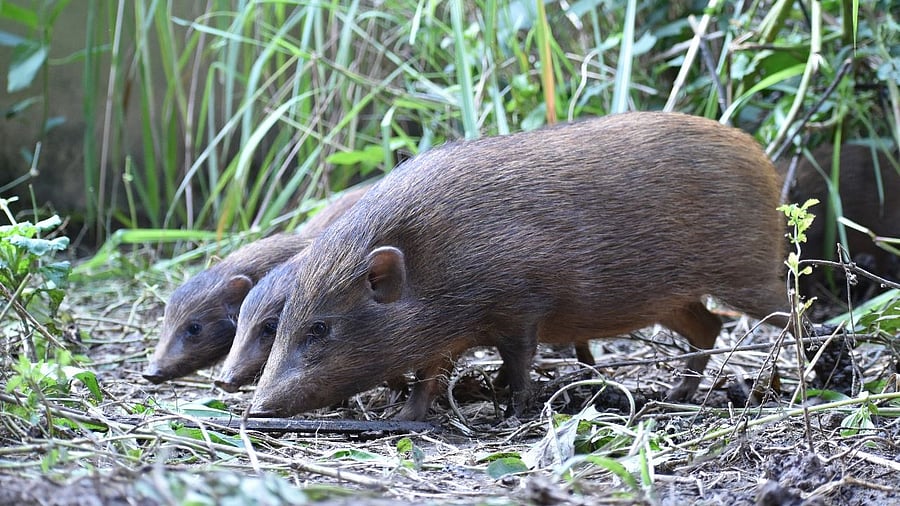
Pygmy hogs
Credit: Aaranyak, Guwahati
Guwahati: They are tiny, shy and considered extinct in the wild till its rediscovery in the Barnadi Wildlife sanctuary in Assam way back in 1971.
Captive breeding and conservation efforts since 1996, however, have provided pygmy hogs, the smallest wild pig species, its largest home in Assam forests.
Since 2008, a total of 179 captive-bred pygmy hogs have been released in the forests in Assam and conservationists now believe that most of the pygmy hog population at present were naturally born in the wild. Wild population of the species is believed to be around 200.
Aaranyak, a biodiversity conservation group in Guwahati, which is leading the conservation activities, on Tuesday said that 59 captive-bred pygmy hogs were released in North Assam's Orang National Park, and the current population is estimated to be 130.
"This is even more exciting as the lifespan of a pygmy hog in the wild is around eight years, so this population is likely to be made up entirely of wild-born hogs," Aaranyak told DH.
The NGO said that nine more captive-bred pygmy hogs were released in the Manas National Park. This was the fifth such release in the national park. "A camera trap study in the 2023-release-site has shown that hogs are exploring and now breeding in the area. A pregnant female hog was captured on camera in the wild for the first time in the programme’s history," said the NGO.
The conservation activities were taken up under the Pygmy Hog Conservation Programme (PHCP), initiated in 1995, jointly by Assam forest department in partnership with the UK-based Durrell Wildlife Conservation Trust, IUCN Wild Pigs Specialist Group and Union Ministry of Environment, Forest and Climate Change. Aaranyak and Eco-Systems India are delivery partners of the PHCP.
"Pygmy hogs are extremely shy and secretive in the wild, remain hidden in tall dense grass and rarely emerge in the open, which has made monitoring them at the reintroduction site in Orang National Park a challenge," Aaranyak further said.
Indicator of species
Aaranyak said that besides being a unique species, the pygmy hog is also a sensitive indicator of this habitat. The tall alluvial wet grassland belt just south of the Himalayan foothills is home to several other highly threatened species, such as the Bengal florican, hispid hare, eastern barasingha, and wild buffalo.
The grassland is also used extensively by rhinos, elephants, tigers, hog deer and several small animals, such as endangered turtles. "These wet grasslands also help maintain the region’s long-term ecological and economic well-being as they serve as a buffer against floods in the rainy season while maintaining high groundwater levels in the dry season, indirectly benefiting farming communities living in the fringe areas," it said.
C. Ramesh, the field director of Manas Tiger Reserve said, “Restoration of the grasslands in this landscape is also very crucial to ensure long-term water security for farming communities living on the periphery of Manas. As an endangered species listed on the IUCN Red List, the reintroduction of pygmy hogs requires and relies on effective grassland management practices, thereby ensuring these ecosystems; overall health and sustainability.”